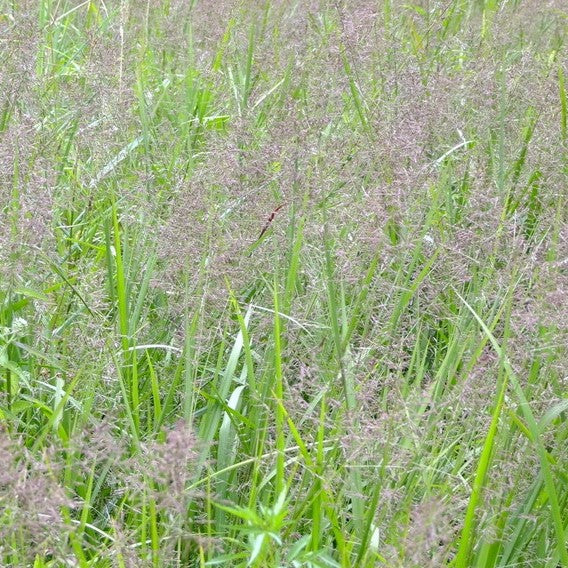Redtop panic grass
Coletania rigidula
Coletania rigidula
Couldn't load pickup availability
Sun/shade: Full sun to part shade
Soil moisture: Wet
Height: 2-4'
Flowering period:
Deer resistance: Medium
A colorful grass for wet spaces, redtop panicgrass is topped by a stately mauve seedhead that gives a lovely blush to the landscape. As summer turns to autumn, the seedhead slowly fades to the color of straw.
Redtop panicgrass is most commonly found in wetlands, occupying swamps, marshes, and the margins of streams and ponds. In the home landscape, it likes consistently moist soil and can handle temporary flooding. While it will grow more vigorously under full sun, it can also tolerate light shade.
Spreading only via seed, redtop panicgrass grows as discrete bunches that form fairly open colonies. Unlike some competitive, sod-forming grasses, redtop panicgrass is amenable to intermixing with wildflower species. The grass’s tolerance for wet soil makes it perfect for a wetland garden, where its slender green leaves and soft purple seedheads provide a lovely contrast to the bold form and color of water-loving forbs. Northern blue-flag iris, swamp milkweed, and spotted Joe Pye are just a few of the gems that would shine to their utmost when interspersed with redtop panicgrass.
Redtop panicgrass supports food-webs by hosting numerous insects, including 27 species of moth and butterfly caterpillars. The plant’s seeds are also prized by birds, including sparrows, blackbirds, and ducks. Although the young leaves of the plant may be browsed by deer, once it matures, they are unlikely to bother it.
Photo © Rob Curtis, CC BY 4.0.

